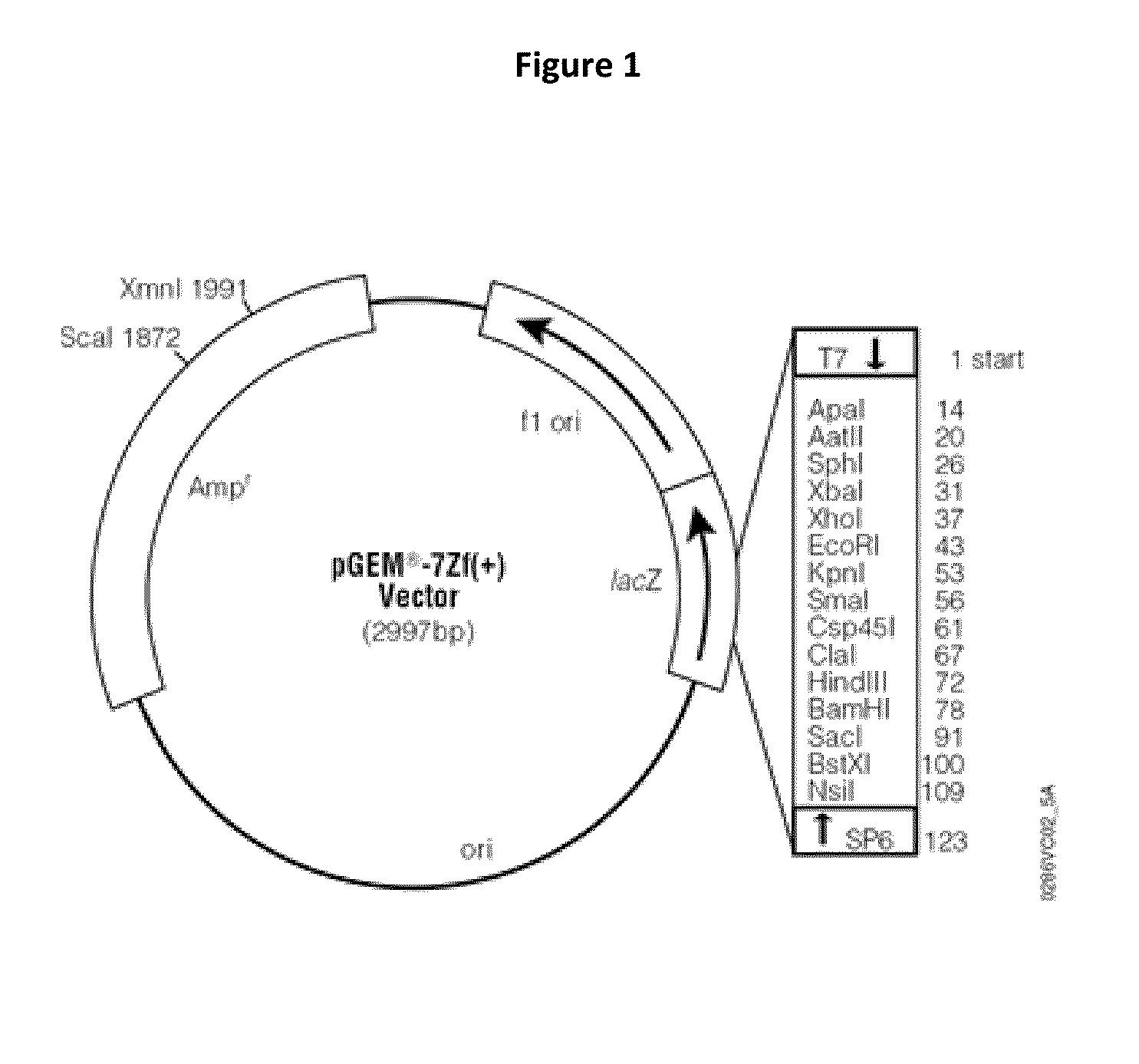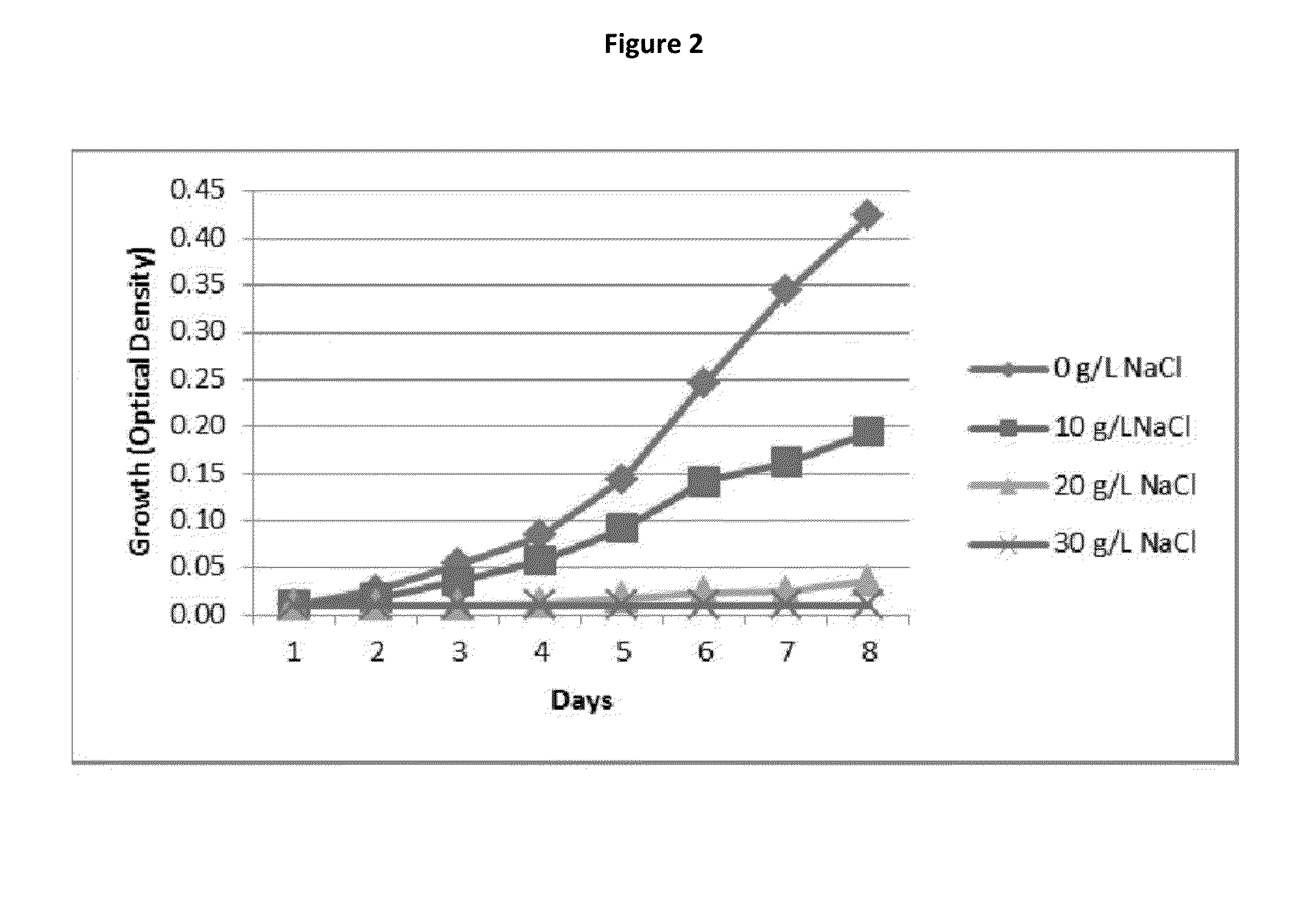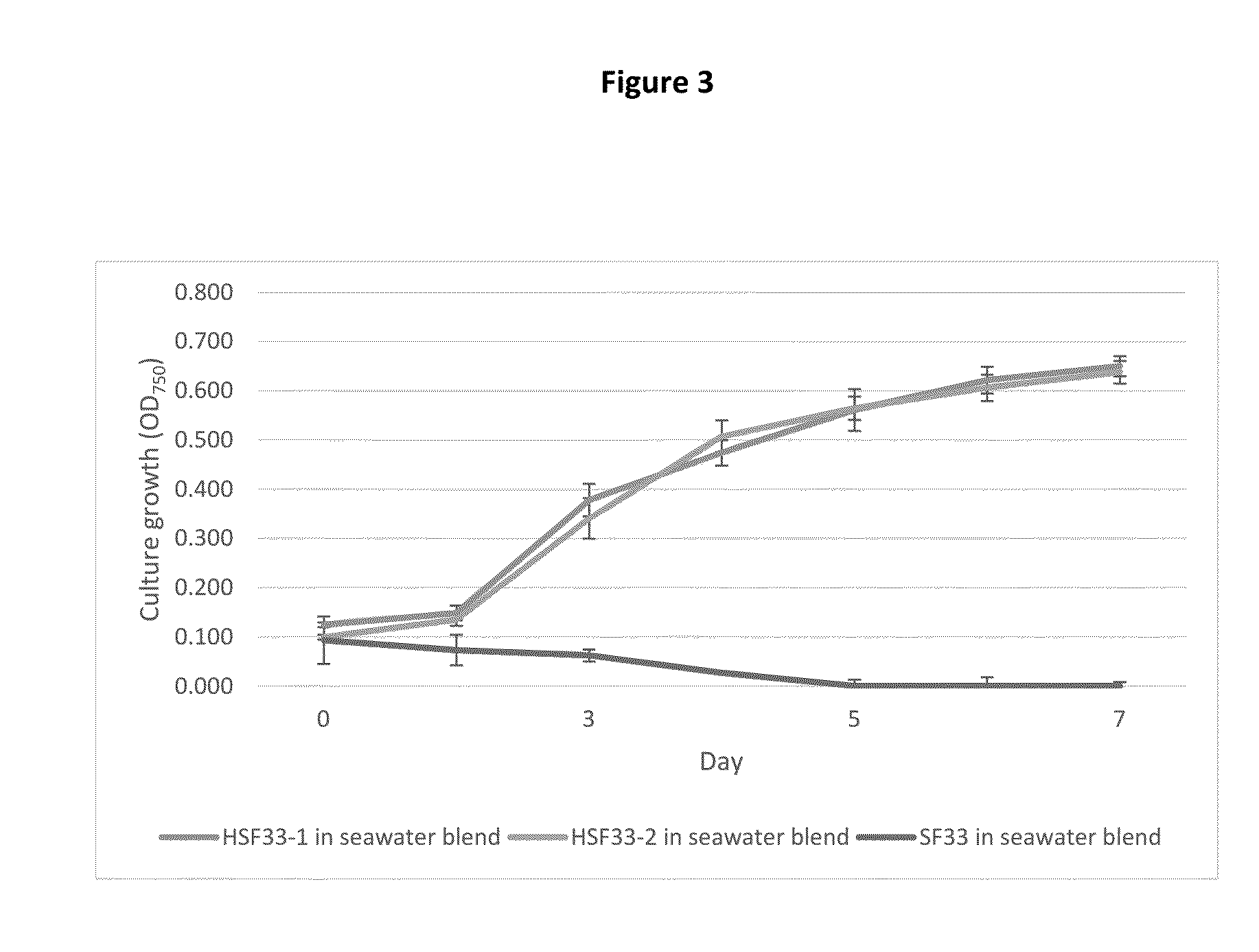Engineered cyanobacteria with enhanced salt tolerance
a technology of cyanobacteria and halotolerance, which is applied in the field of cyanobacteria with enhanced halotolerance, can solve the problems of widespread debate about biofuel production from these sources, only likely to intensify the search for alternative energy sources, and likely to impact future world energy markets. achieve the effect of cost-effective and fast generation tim
- Summary
- Abstract
- Description
- Claims
- Application Information
AI Technical Summary
Benefits of technology
Problems solved by technology
Method used
Image
Examples
example 1
Effect of Different Salt Concentrations on Cyanobacterial Growth
[0060]High levels of salinity cause a stress response in cyanobacteria, leading to an overexpression of certain proteins, particularly in more salt tolerant strains. High amounts of salt present in the environment can lead to diminished growth and viability in F. diplosiphon.
[0061]Preliminary results have demonstrated that F. diplosiphon does not tolerate salt concentrations above 15 g / L NaCl in solid media and 10 g / L NaCl in liquid media. The salinity of sea water is around 35 g / L which is more than twice the concentration that F. diplosiphon can tolerate. Thus, the key to unlocking this promising new source of energy is to enhance salt tolerance in this species.
[0062]Cyanobacterial species F. diplosiphon were cultivated on liquid and solid growth medium with varying concentrations of sodium chloride. See FIGS. 2A and 2B. Determination of growth rates in various salt concentrations were compared to the control (absenc...
example 2
Genetic Transformation of Wild Type F. diplosiphon
[0064]Candidate genes, such as, ApNhaP (SEQ ID NO: 1), BetT (SEQ ID NO: 2), Mdh (SEQ ID NO: 3), ApNapA (SEQ ID NO: 4), ApGMST (SEQ ID NO: 5), ApDMT (SEQ ID NO: 5), and HlyB (SEQ ID NO: 7) from halotolerant cyanobacterial species were used to transform F. diplosiphon to complement its ability to grow in saline environments (Kehoe, D. M. et al., “Using molecular genetics to investigate complementary chromatic adaptation: Advances in transformation and complementation,” Methods in Enzymology, 297, 279-290 (1998) which are hereby expressly incorporated by reference in their entireties).
[0065]Other candidate genes were also identified using the methods disclosed, for example, in Example 3, and transformed into F. diplosiphon.
[0066]F. diplosiphon with the integrated halotolerance gene were screened and the presence of the gene was confirmed using RT-PCR. Physiological evaluations of transformed lines were then conducted (FIG. 3). Molecul...
example 3
Identifying Proteins Involved in Stress Response
[0068]Cyanobacterial colonies grown under various light and salt parameters were subjected to proteomic analysis. Proteins were isolated using a protein isolation and purification kit. The purified protein extracts were then run in one and two dimensional gels and then analyzed for bands and spots exhibiting differential patterns of protein accumulation. The spots representing these proteins were then identified, and linked to abiotic stress tolerance in cyanobacteria.
[0069]Once the candidate proteins were identified, the corresponding genes were isolated and sequence analyzed. These gene sequences were used to transform F. diplosiphon (Kehoe, D. M. et al., “Using molecular genetics to investigate complementary chromatic adaptation: Advances in transformation and complementation,”Methods in Enzymology, 297, 279-290 (1998), which is hereby expressly incorporated by reference in its entireties for increased salt tolerance).
[0070]Genetica...
PUM
| Property | Measurement | Unit |
|---|---|---|
| concentrations | aaaaa | aaaaa |
| concentrations | aaaaa | aaaaa |
| concentrations | aaaaa | aaaaa |
Abstract
Description
Claims
Application Information
 Login to View More
Login to View More - R&D
- Intellectual Property
- Life Sciences
- Materials
- Tech Scout
- Unparalleled Data Quality
- Higher Quality Content
- 60% Fewer Hallucinations
Browse by: Latest US Patents, China's latest patents, Technical Efficacy Thesaurus, Application Domain, Technology Topic, Popular Technical Reports.
© 2025 PatSnap. All rights reserved.Legal|Privacy policy|Modern Slavery Act Transparency Statement|Sitemap|About US| Contact US: help@patsnap.com



